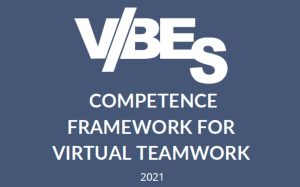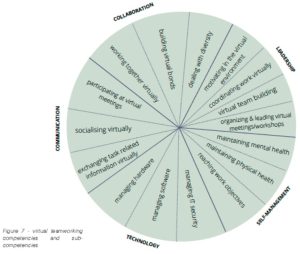09 Jan VIBES virtual teamworking competencies framework released
Being able to work in virtual teams has become one of the basic employability skills. The challenges of working in virtual teams are multifaceted. Such teams cope with a lack of conventional trust-building mechanisms, barriers to communication & collaboration, diversity, challenges and many more. To identify competencies needed to successfully lead and participate in virtual teams 33 in-depth interviews from seven European countries (Croatia, Estonia, Finland, Italy, Spain, Germany and Switzerland) were performed in the second half of 2021. 
The research aimed for companies where virtual teamwork played a crucial role in the everyday operations of companies such as companies operating or having subsidiaries abroad or companies where employees favour flexible working arrangements. The interviews targeted individuals who are the key players in the employee section or who have profound experience in leading virtual teams such as heads of HR departments, CEOs, leadership development managers, relationship managers etc.
The analysis revealed five main themes of challenges and related competencies: teamwork, communication, technology, self-management and leadership. As results indicate, the key to successful virtual team playing is to maintain a good balance between independence and orientation. Also, independent learning skills, valuing technological innovation and proficient digital communication skills are essential.

It can be said that virtual environment expects from its members much higher managerial competencies, as they must be the managers of themselves – making sure that they have the necessary tools for working and get work done on time, have the opportunity to relax, socialize, and take time off. Moreover, virtual team-working requires its member’s ability to manage relationship building, communication, and collaboration virtually. Thus, virtual team members and leaders must find the balance between independence (being their own boss and getting things done on their own) and team orientation (sharing with others, asking for help, etc.).

Also, traditional activities, like getting to know each other, building trust & relationships, communicating on tasks, and other topics have all moved to the virtual environment – expecting virtual team leaders and members to know how to run these processes smoothly in the digital world avoiding possible obstacles. Virtual team members are expected to be open to many things, whereas the most important aspects to highlight are technological innovation, diversity & changes. Some basic knowledge and skills of how to use technological tools and work in virtual settings are fundamental. However, individuals who like to learn and try out new things will likely adapt to the advancements in technological tools.
Full framework can be found in attachment:



